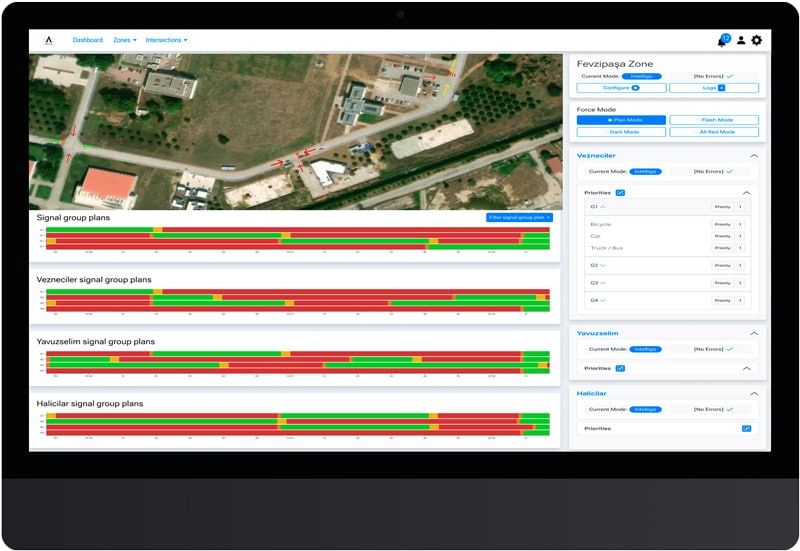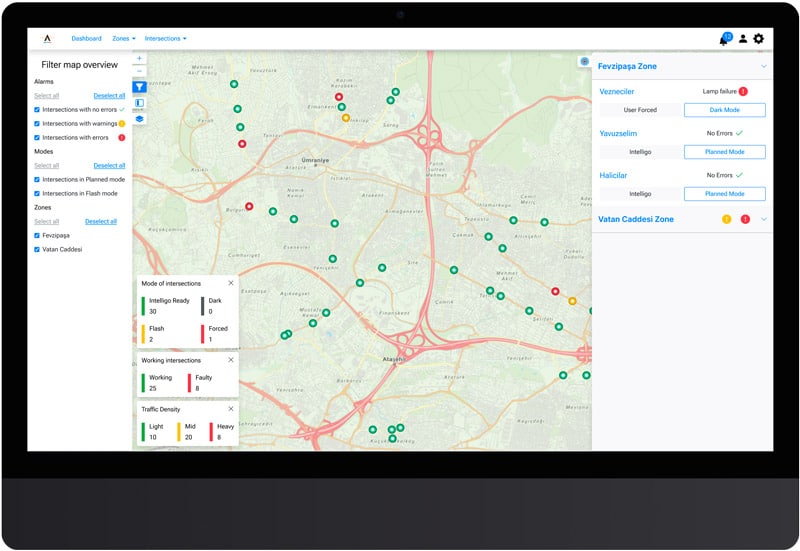IntelliFlow
IntelliFlow serves as the central component of the IntelliGo system, dynamically adjusting traffic signals in real-time to match the current traffic conditions. This adaptive process is driven by a signal algorithm that continuously receives live data inputs from the intersection.
The system delivers real-time insights into traffic flow from all directions, including data on the number of vehicles, their sizes, and speeds.
The algorithm makes rapid calculations every second, determining whether the traffic light should remain green in a specific direction or be switched to another. The fundamental guiding principle of this algorithm is to minimize the waiting time for all vehicles in every direction. Consequently, it considers not only the flow of oncoming vehicles in the direction with the green signal, but also accounts for all waiting and oncoming vehicles in the direction with the red signal.
Furthermore, the algorithm factors in the size of vehicles, differentiating between cars and trucks due to their varying energy consumption. A truck, for instance, requires more energy and generates greater CO2 emissions when it must frequently stop and then accelerate, making it an important consideration in optimizing traffic management.
The basic system has a built-in machine learning-based intelligence, allowing each intersection to develop its own optimized traffic flow, and continuously optimize the management of the intersection’s traffic lights. Of course, with normal traffic rules applied including the
safeguard, that two colliding directions do not both have green-time. Rules relevant to the individual intersection can be easily applied to ‘overrule’ the basic intelligence.
For example, it may be relevant to apply special priorities during rush hours or periods when a side lane experiences higher than usual traffic.
This way, you’ll have a basic, intelligent system that is scalable to fit all intersections. Furthermore, it offers the possibility to add individual rules, such as giving priority to a direction during a specific period of time. Setting up different rules in the system is easily accomplished and doesn’t require any programming skills. There’s no need to rely on external programming resources.





